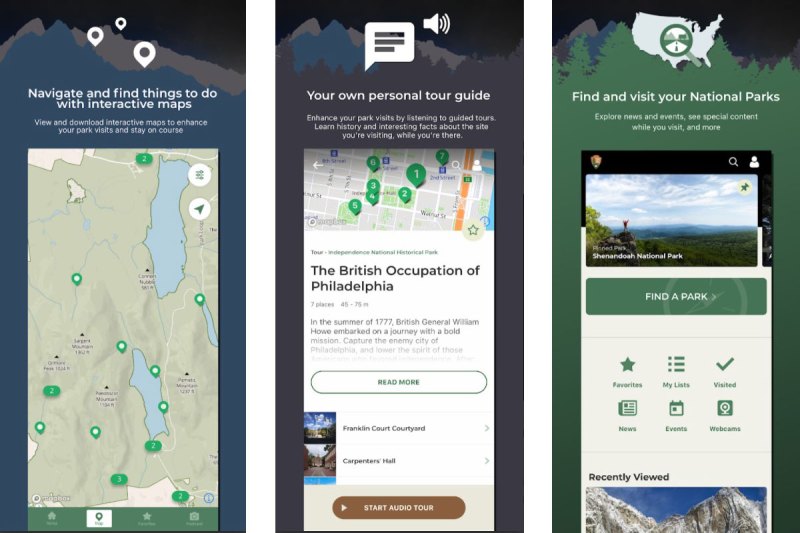The U.S. National Parks have been called “America’s best idea.” But it wasn’t until this century that many Americans who’d never visited a National Park realized what they were missing. Visitor numbers, even to the lesser-known and most remote parks, have exploded in the last decade. Still, the overwhelming number of parks to explore — more than 400 in total — can make it difficult to know where to start or which ones are truly worth a visit. This month, the National Park Service (NPS) is looking to change that with the debut of an all-in-one smartphone app that puts the personal experience, naturalist wisdom, and historical knowledge of hundreds of park rangers in your pocket.
The new National Park Service app combines every National Park Service “unit” (that includes everything from National Parks and National Monuments to National Battlefields and National Rivers) into a single app. Beyond vital information like visitor center hours, entrance fees, and parking tips, it features interactive park maps, trail and

The idea of an official National Park Service smartphone app isn’t new. But, until now, accessing the same information meant downloading more than 30 separate apps. Alternatively, outdoor adventure and nature lovers have always had the option of using unofficial third-party apps. Chimani has long been the go-to app for comprehensive mobile guides on every National Park. Hikers can find a dizzying array of information, including vertical profiles, reviews, family tips, and more, for most National Park
The free National Park Service app is available for iOS and Android devices. Although the app is officially available for download, the NPS notes that details may not be complete for every park just yet. It’s building out content for every park unit as quickly as possible, so expect regular updates throughout this year.
Whether your park visit involves light front-country “glamping” or more hardcore backcountry exploration, check out our list of the best websites and apps to help you pack for any outdoor trip.
It’s also worth noting that the U.S. National Park Service offers fee-free national park days to more than 400 sites each year. For 2022, the six days include:
- January 18: Birthday of Martin Luther King, Jr.
- April 16: First day of National Park Week
- August 4: One-year anniversary of the Great American Outdoors Act
- August 25: National Park Service Birthday (NPS turns 105 this year!)
- September 25: National Public Lands Day
- November 11: Veterans Day
As far as actually using the app goes, you can search for parks by location, name, activity, and topic. The parks then have descriptions, photos, and information about fees and hours. It’s really a great resource for exploring the parks. Once you’ve found a park you like you can save it to your favorites to easily return to it later. You’ll likely want to download a navigation app, like Gaia or All Trails to use when exploring the parks, as it doesn’t seem like the NPS app is designed for navigating. Though the app does offer self-guided walking tours, which seem fun to check out.
If you’re looking to get more information on parks regarding specific times of year or to read more in-depth descriptions of the parks, we’ve got you covered. We have a post on the 20 (20!) best U.S. National Parks, and a post on the most affordable time to visit.



